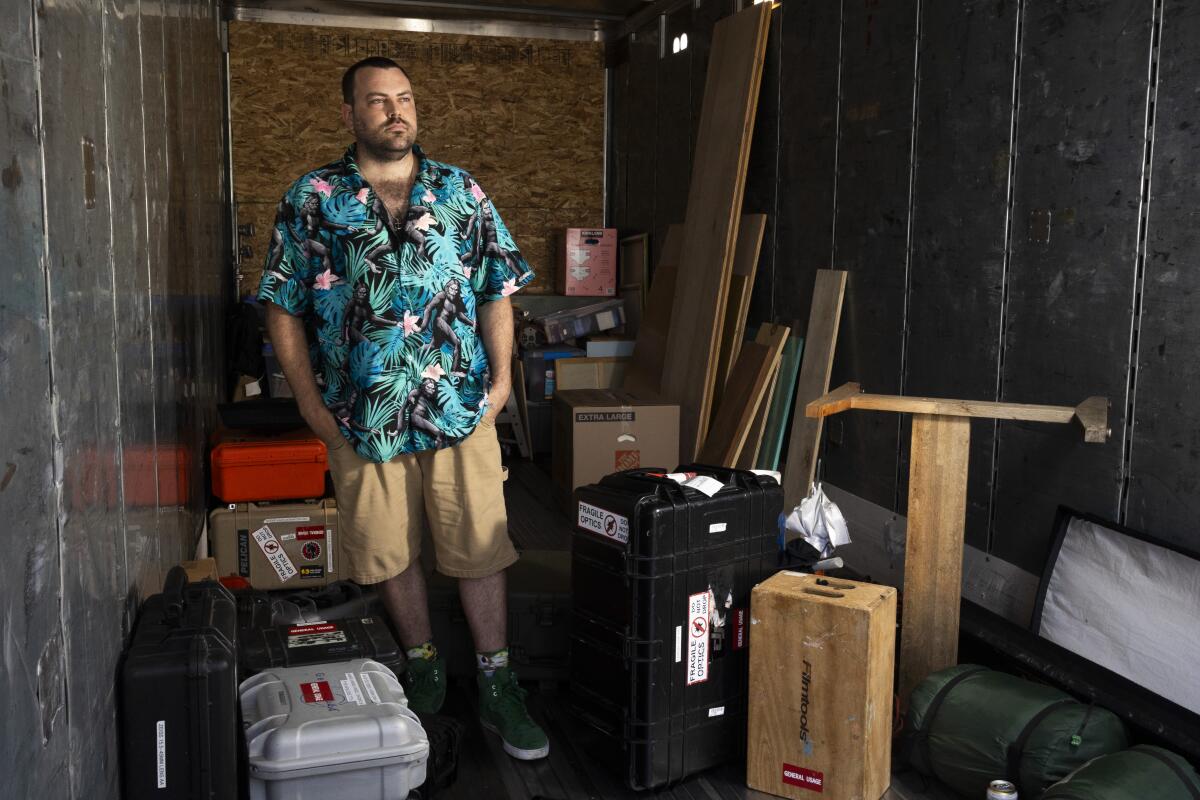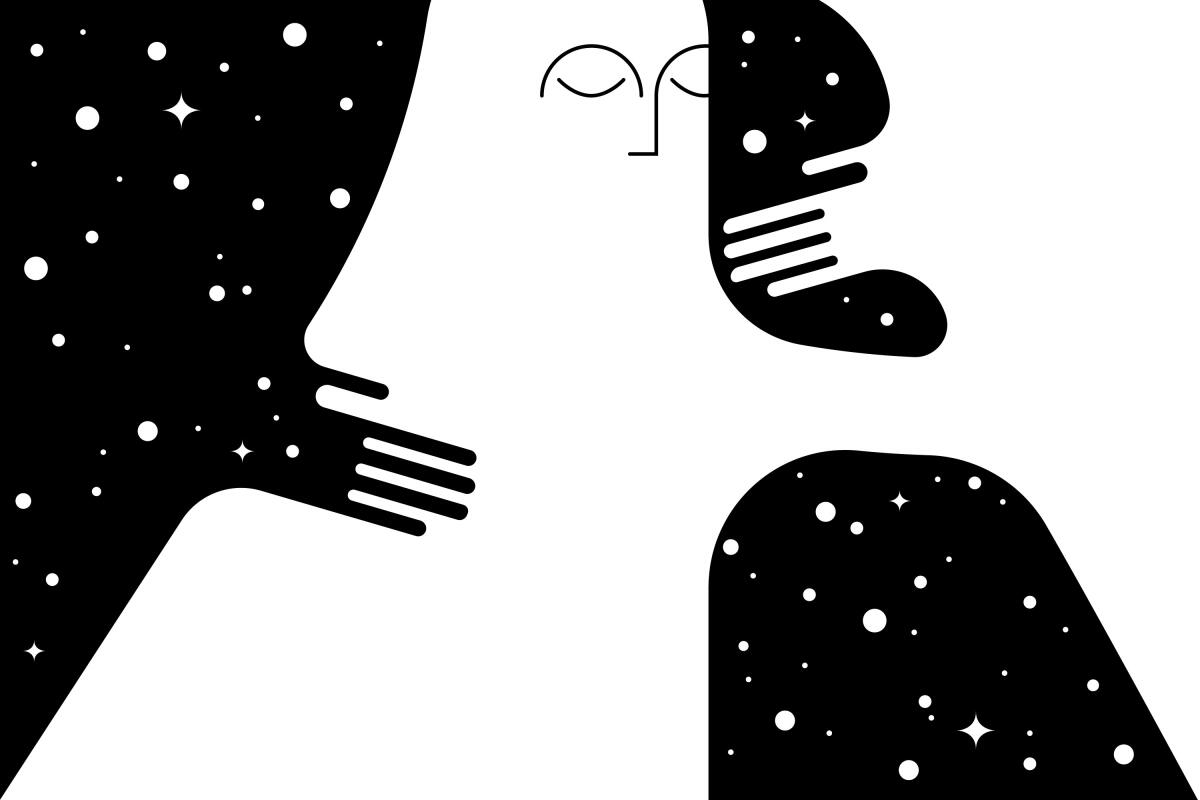What Biden’s California border looks like as voter concerns about immigration grow
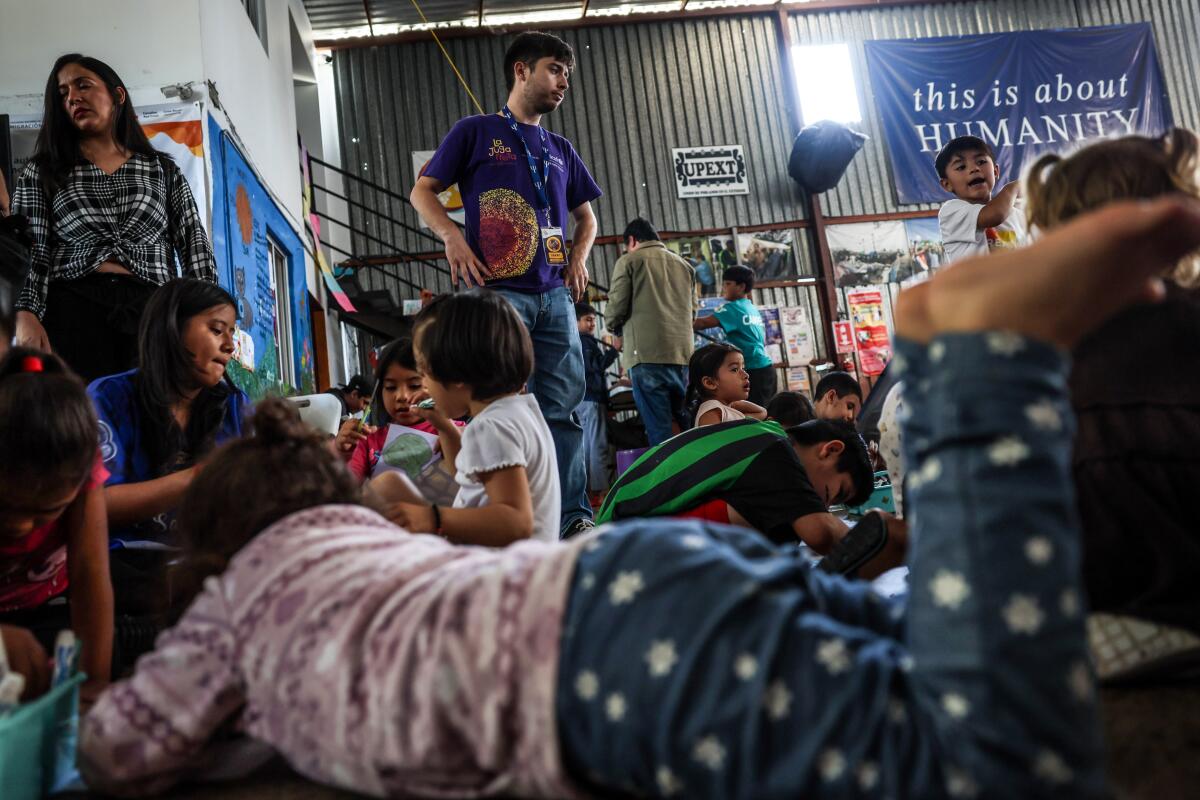
Good morning. It’s Monday, June 24. I’m Andrea Castillo, and I cover federal immigration policy for The Times. Here’s what you need to know to start your day.
- More people cross the border into the U.S. in California than anywhere else. We talked to four migrants just as Biden announced stricter asylum rules.
- Film and TV workers are leaving Los Angeles.
- The secret’s out on a “hidden” speakeasy at Dodger Stadium.
- And here’s today’s e-newspaper.
You're reading the Essential California newsletter
Our reporters guide you through our biggest news, features and recommendations every morning
You may occasionally receive promotional content from the Los Angeles Times.
These migrants arrived at the California border just as Biden announced new asylum orders
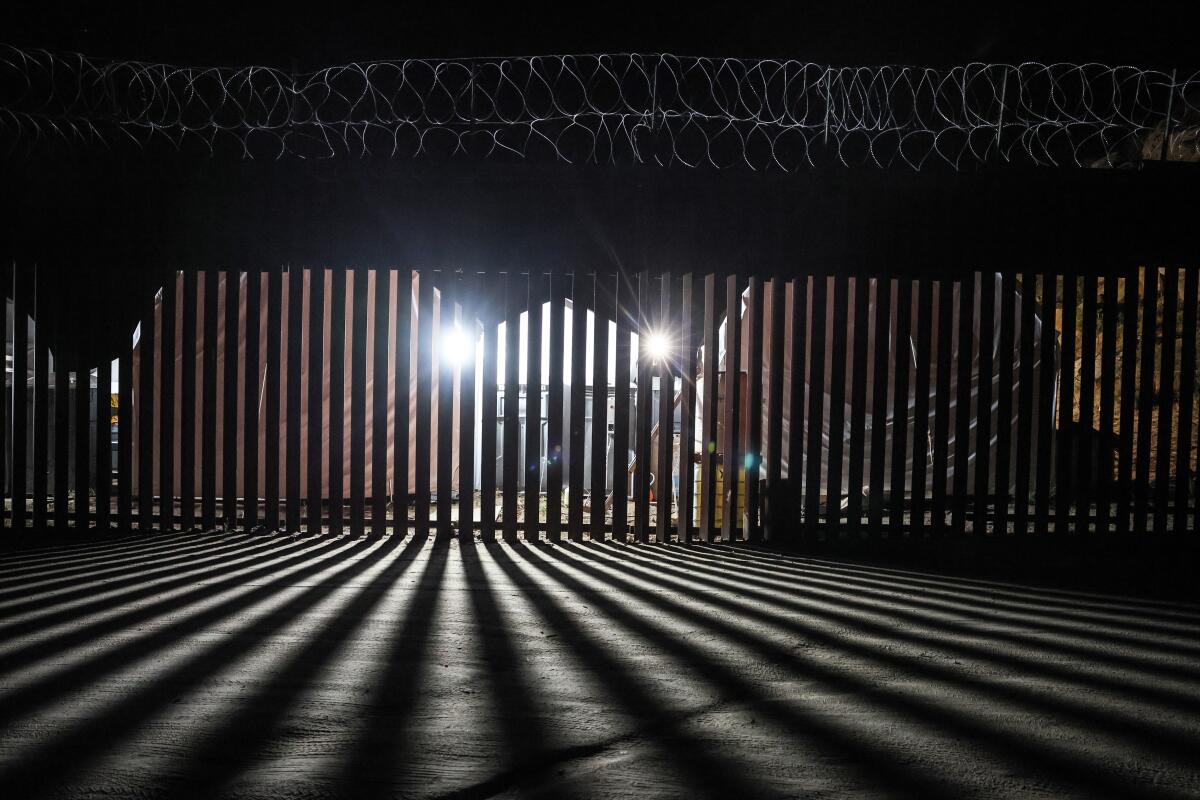
I met Ze, a 27-year-old from China, earlier this month at a transit center in San Ysidro where he and other migrants had been dropped off by Border Patrol after crossing unlawfully into the United States.
I was there reporting on the immediate aftermath of the Biden administration’s executive order that raises the legal standard for asylum claims and blocks access to those crossing the border illegally when arrests average higher than 2,500 a day.
The move defies national and international law, which allows for the pursuit of asylum regardless of how someone arrives on U.S. soil. But immigration is at the forefront of the presidential election, and polls have shown many voters are concerned about the issue.
Migrants arrived exhausted and confused about how the process would work. Many hadn’t heard of the changes.
San Diego, where the vast majority of Chinese migrants arrive, had recently surpassed Texas as one of the top regions for arrivals along the southern border for the first time in more than two decades.
Border Patrol said preliminary data since Biden’s announcement showed arrests had fallen by 25%. And May figures showed arrests fell to the third-lowest of any month during his presidency.
Like most Chinese migrants, Ze flew to Ecuador and made his way up through Central America and Mexico to the southern U.S. border. But starting next month, Chinese citizens can no longer enter Ecuador without a visa. The move could drastically lower the number of Chinese citizens able to reach the U.S.
Ze, who asked to be identified by a nickname because he is at risk of persecution as a Muslim member of the Hui ethnic minority, was taken into federal custody just before Biden’s order took effect.
But he hadn’t arrived at the California-Mexico border alone. His older brother was missing.
So Ze did what has become the norm for migrants who are released without their family members: He waited outside the transit center all day.
There are no public bathrooms — a grocery store nearby allows migrants to use the restroom if they buy something — and free food is scarce beyond the occasional pizza and snacks brought by volunteers and aid groups.
Border Patrol commonly separates family members during processing. Often they can reunite within days, but sometimes it takes weeks. Occasionally, some members are released into the U.S. while others are deported.
At the transit center where migrants are dropped off, humanitarian organizations usher them toward the local trolley and offer directions to the airport using free public transportation. Licensed and unlicensed taxis also wait for customers willing to pay inflated prices.
Ze had no idea whether or when his brother would be released. When more Border Patrol buses pulled up to the transit center, he watched expectantly for his brother to pop out. He didn’t.
Ze, who worked as a translator, speaks five languages including Hindi. He befriended Sam Patel, from India, who was waiting for his wife.
The two walked to a nearby Cricket Wireless, where Patel purchased a cellphone — he had been robbed, like many migrants, on his way to the border.
Around the back of the shop, in a rare moment of solitude, Ze knelt on the concrete for his third prayer of the day.
Patel, his phone now set up, finally reached his wife, who had spent the night at a shelter. She soon arrived in a taxi, and they rushed to embrace each other, tears streaming down their faces.
By 8 p.m., Ze somberly headed with them to San Diego International Airport. The Patels would soon get on a flight to South Carolina. Ze, meanwhile, spent a sleepless night seated in the baggage claim area with others who couldn’t get into local migrant shelters.
The next morning, he returned to the transit center to wait for his brother’s release. They reunited there that afternoon.
After another sleepless night at the airport, a friend purchased them flights to New York, where they joined other Chinese migrants in Flushing.
Ze said he looked forward to openly practicing Islam. Eid-al-Adha, one of the main Islamic holidays, was coming up. Next up on his to-do list: Find a lawyer, so he could apply for asylum, and get a job.
Today’s top stories
Hollywood’s exodus
- Film and TV workers are leaving Los Angeles.
- Behind the stunning job losses in Hollywood: ‘The audience has moved on.’
- With Hollywood shedding jobs, here is help for coping with the slowdown.
Wildfire season is taking hold
- Wildfires have already burned 90,000 acres in California, and summer is just beginning.
- The state is bracing for heavy wildfire activity this fall: “They’re only going to get worse.”
Welcome to Giant Rock
- A seven-story boulder on federal land has become a tinderbox of tensions over who gets to enjoy this patch of Mojave Desert, which has rapidly gentrified since the COVID-19 pandemic.
- Here’s a timeline of key events at Giant Rock, a landmark that attracts seekers, partiers, conservationists and, according to some, extraterrestrials.
A summer bump in COVID cases
- The FLiRT variants are fueling a summer bump in COVID cases in L.A. County.
- Here’s what to do if you feel sick or test positive for COVID-19.
These Angelenos are some of the most influential:
- When COVID-19 decimated the global supply chain, it fell to Port of Los Angeles Executive Director Gene Seroka to untangle an unprecedented disruption.
- As chief heat officer for the city of Los Angeles, it is Marta Segura’s job to make sure we don’t look away from the threat coming for us.
- Peter Eliasberg is the L.A. County sheriff’s worst nightmare.
More big stories
- The Supreme Court’s latest ruling on guns will reshape major challenges to firearms laws in California.
- Deep sea mining threatens sea life, environmentalists say. A California law has a solution.
- A magnitude 3.2 earthquake shakes Los Angeles.
- Pushing to close the funding lag that drains millions from homeless services.
- Bass blasts ‘abhorrent’ violence outside L.A. synagogue during protest, beefs up LAPD patrols.
- Carbon-capture projects launch in Los Angeles County as CO₂ levels reach global records.
Get unlimited access to the Los Angeles Times. Subscribe here.
Commentary and opinions
- Editorial board: A lack of housing is pushing more seniors onto the streets. That’s on all of us.
- Doyle McManus: The Biden-Trump debate will be a demolition derby. But will it change the race?
- Robin Abcarian: Anthony Fauci has a right to savage Trump. His memoir takes a different and telling approach.
- Mark Z. Barabak: Two years after the Supreme Court’s abortion decision, meet the expert on post-Roe America.
Today’s great reads
What is the “shadow self,” and why is everyone talking about their hidden desires? This is how a concept created and coined by Carl Jung became the latest pop psych buzzword for self-discovery on social media.
Other great reads
- How McHenry, Ill., the hometown of Dodgers pitcher Bobby Miller, stoked his fiery “competitive mindset.”
- Being in L.A. can make you environmentally anxious. Artist Patty Chang decided to do something about it.
How can we make this newsletter more useful? Send comments to [email protected].
For your downtime
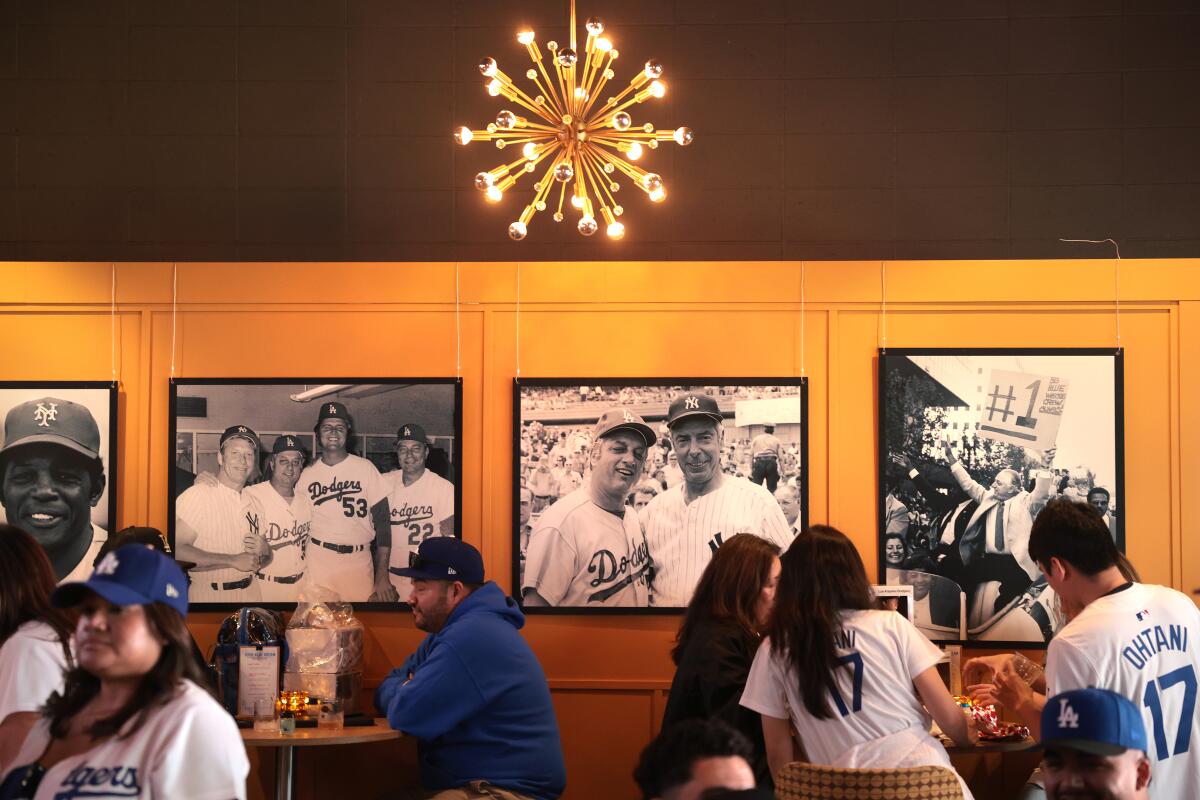
Going out
- ⚾ The secret’s out on a “hidden” speakeasy under Dodger Stadium’s right-field pavilion.
- 🎭 Review: A new play at the Geffen Playhouse, “tiny father,” disappoints.
- 🎢 Disneyland with a preschooler? Here are seven genius tips for avoiding meltdowns (and bankruptcy).
Staying in
- 📺 “Orphan Black: Echoes” mirrors a television industry desperate to reclaim its glory days.
- 🧑🍳 Here are recipes for five salads to make all summer long.
- ✏️ Get our free daily crossword puzzle, sudoku, word search and arcade games.
And finally ... a great photo
Show us your favorite place in California! Send us photos that scream California and we may feature them in an edition of Essential California.

Today’s great photo is from Bronwyn Jamrok of Culver City: Mossbrae Falls in Dunsmuir.
Jamrok writes: “I didn’t know California could look like this! So much water and green! California never stops giving great surprises.”
Have a great day, from the Essential California team
Andrea Castillo, reporter
Karim Doumar, head of newsletters
Check our top stories, topics and the latest articles on latimes.com.
Sign up for Essential California
The most important California stories and recommendations in your inbox every morning.
You may occasionally receive promotional content from the Los Angeles Times.
